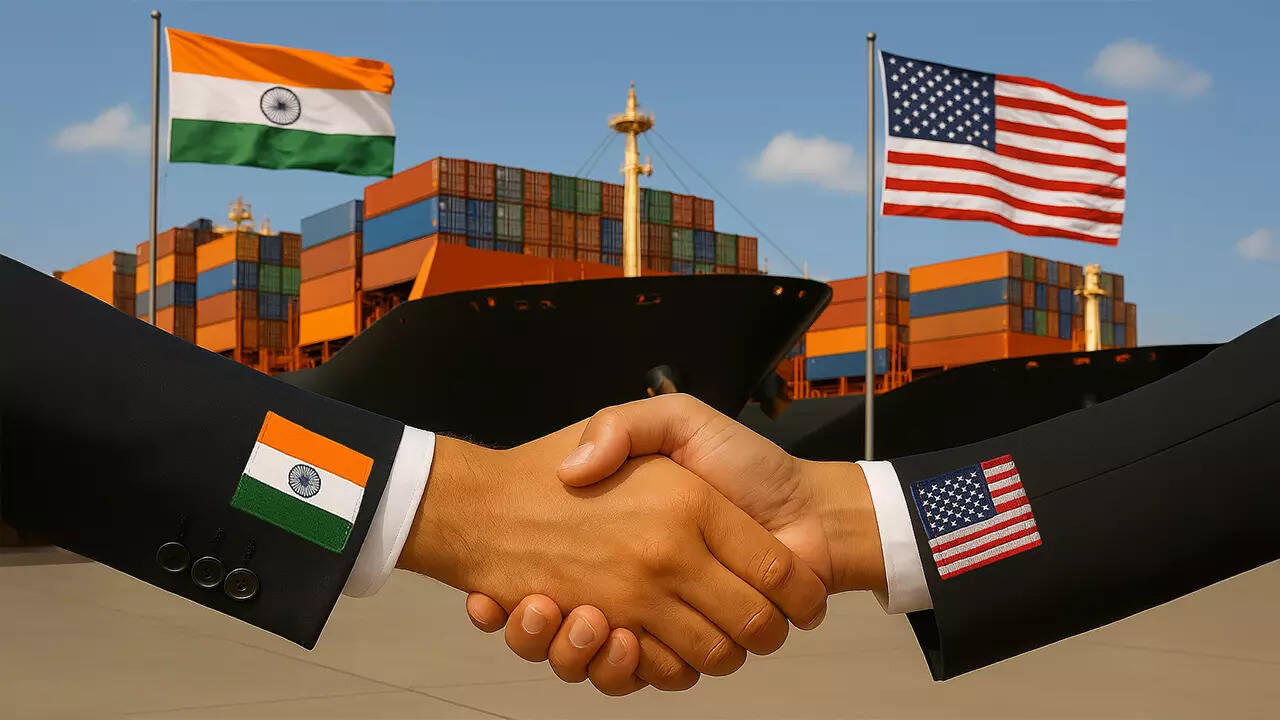A three-step strategy from GTRI aims to protect India’s trade interests with the US. It proposes halting Russian oil imports under sanctions, seeking the removal of punitive tariffs, and resuming negotiations on fair, balanced terms for improved export competitiveness.
Navigating the Choppy Waters of Global Trade: How India Might Safeguard its Economic Interests
The world stage is a complex chessboard, and India, with its burgeoning economy and strategic location, is a key player. Recent rumblings in global trade, particularly concerning tariffs and the flow of goods and services, have put the spotlight on India’s approach to protecting its own interests. But what exactly are the challenges, and how can India navigate these potentially treacherous waters?
Decoding the Tariff Tango: India’s Balancing Act
Tariffs, those taxes on imported goods, are a double-edged sword. While they can shield domestic industries from foreign competition, they can also inflate prices for consumers and spark retaliatory measures from other nations. This delicate dance is further complicated by geopolitical factors and evolving trade agreements. India finds itself at the center of this intricate web, seeking to foster growth while safeguarding its economic sovereignty.
One potential strategy involves focusing on bolstering domestic manufacturing capabilities. Strengthening the “Make in India” initiative allows the nation to become less reliant on imports in certain sectors, mitigating the impact of tariffs imposed by other countries. Think of it as building a strong foundation for future economic resilience.
A Three-Pronged Approach to Protecting India’s Interests
So, how can India proactively address these challenges? The Global Trade Research Initiative (GTRI) suggests a compelling three-step framework. First, prioritizing dispute resolution. Instead of letting trade disputes fester, India should actively engage in negotiations and utilize established mechanisms like the World Trade Organization (WTO) to find equitable solutions. Swift and decisive action can prevent small skirmishes from escalating into full-blown trade wars.
Second, diversification is key. Relying heavily on a single trading partner can leave a nation vulnerable to economic shocks if that relationship sours. Actively seeking out new markets and forging stronger ties with diverse economies reduces dependence and strengthens overall economic stability. This includes exploring new trade agreements and fostering stronger relationships with nations across the globe.
Third, focusing on competitiveness. Indian businesses need to be equipped to compete on a global scale. This requires investment in infrastructure, streamlining regulations, and fostering innovation. By creating a business-friendly environment, India can attract foreign investment, boost exports, and strengthen its position in the global marketplace.

The Russian Oil Question: A Case Study in Strategic Autonomy
The ongoing situation with Russian oil provides a fascinating case study in India’s approach to safeguarding its interests. Despite international pressure, India has continued to import Russian oil, albeit at a discounted price. This decision, while controversial, highlights India’s commitment to its energy security and its willingness to pursue its own strategic objectives.
It’s not about ignoring international concerns, but rather about carefully weighing them against the nation’s own needs and priorities. India has consistently maintained that its energy needs are paramount, and it will source oil from wherever it can obtain the best possible terms. This pragmatism, coupled with a commitment to diversifying energy sources in the long term, is a crucial aspect of India’s overall strategy.
Looking Ahead: A Proactive Stance is Paramount
In the ever-shifting landscape of global trade, a reactive approach simply won’t cut it. India must be proactive, anticipating challenges, and developing comprehensive strategies to protect its economic interests. This requires a collaborative effort between government, industry, and academia, fostering a shared understanding of the risks and opportunities that lie ahead.
Furthermore, investing in research and development is crucial. Developing cutting-edge technologies and innovative products will enable Indian businesses to compete more effectively in the global marketplace and reduce reliance on imports. This proactive approach will help India to navigate the complexities of global trade and secure its economic future. And this proactive strategy to safeguard India’s interests in the world of global trade is a great move.
Conclusion: Charting a Course for Economic Resilience
Navigating the complexities of global trade requires a delicate balance of strategic planning, proactive diplomacy, and a commitment to domestic growth. By prioritizing dispute resolution, diversifying trade partnerships, and fostering competitiveness, India can safeguard its economic interests and chart a course for sustainable growth. The path ahead may be challenging, but with a clear vision and a proactive approach, India can solidify its position as a key player in the global economy. Don’t forget to explore India’s growing tech industry and its impact on the global economy.







